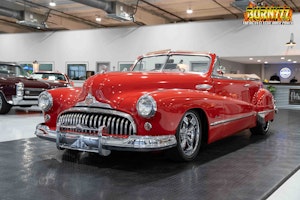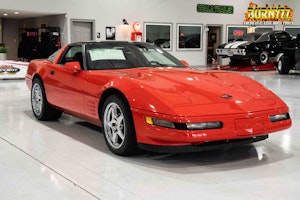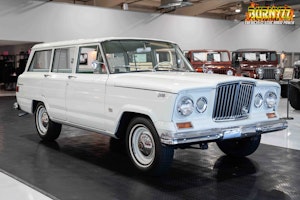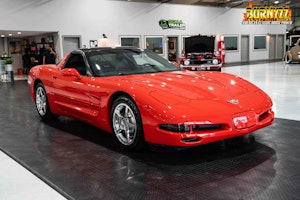Media | Articles
The Big, Dumb Bike of My Dreams Is Already Teaching Me New Things
Most of my projects are easier than they seem. While the specific tasks might be complicated or specialized, I keep things reasonable by only playing with certain toys. Almost exactly one year ago, when I bought a 1988 Honda XR600R with a mutilated crankshaft, the reality of how much technology and complication I was actively avoiding came crashing down upon me.
No car, truck, or motorcycle is simple. The thousands of parts that comprise an engine or chassis in even the most basic of vehicular transportation are not the slap-dash assemblies that some would have you believe. Simplicity exists on a sliding scale, for DIYers. For the sake of argument, we’ll agree that on one end is replacing glued-on emblems and on the other is replacing the heater core or wiring harness in a modern luxury car. In between lie an infinite number of tasks and projects that can soak up infinite amounts of time and curiosity. Everyone’s happy place on the scale is different.

For a decade or so I had intentionally hung out on one side of that scale. The vast majority of my projects are vintage air-cooled models that don’t have many frills or features. Only recently have I begun moving the slider from the easy side towards the hard side, and even then I have done so in measured amounts. I completely restored a cylinder head in my garage, but it was a single-cylinder, air-cooled engine.
Rebuilding a XR600R engine might not seem like a single meaningful stroke towards the deep end of the pool. The bike is from the same era as my pair of Honda XR250Rs, which I know inside and out. The most obvious difference between an XR250R and a XR600R engine is scale: The 600R is a big lump of an engine, over 100 pounds of aluminum castings wrapped around a big steel crankshaft and connecting rod. But, as I get closer and closer to running the XR600R engine I bought disassembled, in ten different boxes, a handful of its more complicated features present hurdles that I haven’t had to stride. One such example is the dry-sump oil system.


The XR600R has some racing pedigree, but in stock configuration, it’s hardly a high-performance machine. Dry-sump oiling is typically associated with high-g cornering or acceleration, since it prevents gravity from starving the engine of oil, but using a dry-sump system can also help an engineer solve a packaging issue. The sizable engine case of an XR600R holds all the spinny bits, but that leaves no room for the oil that must circulate to lubricate those parts as they go ’round—at least, not if the engine is going to fit into the frame of this bike. The dry-sump system saves space by storing the engine oil inside the steel frame. Oil is pulled into the oil pump from a fitting at the bottom of the downtube in front of the engine and pushed up into the oil filter housing before progressing to the various shafts and bearings throughout the engine. Gravity feeds all that oil back to—wait, there is no oil pan or storage tank at the bottom of the XR600R. The oil pump is split in two: one side forces oil into and throughout the engine, and another vacuums it out of the bottom and pushes it back up into the oil tank. That second side is known as the scavenge pump.
Marketplace
Buy and sell classics with confidence



One of the reasons I’ve had to learn about the dry-sump system of the XR600R is because the oil system must be carefully primed before you start the engine for the first time—and this one is almost ready. But before I give the long kickstarter its first real heave, I decided to spend a whole afternoon learning, understanding, and priming the system.


I’ve read about dry-sump systems and discussed them with friends for literal decades at this point, but until now everything I’ve owned and rebuilt has been equipped with a simple, wet-sump system. Is the XR600R one of the least exotic ways for me to learn the intricacies of this fun system in practice? Probably, and that’s a good thing.
Any project vehicle is a huge undertaking, from any angle you look at it. Your time, money, and sanity are on the line. You can keep any one of those three on any project, and I have only been able to keep all three by starting simple and progressing to more and more complicated projects. After rebuilding three of the even more basic wet-sump XR250R engines, the only new things to me on the 600R were the shape of a few parts and this oiling system. We curate our expertise by learning a few new things while reinforcing and evolving our previous knowledge. I’m no expert on XR engines, but on a long enough timeline … maybe.






















Those pump bits look like they need some polishing. At least it’s a pretty simple gerotor pump style. Best of luck with pumping up the j̶a̶m̶ oil.
Sharp eye. That is actually a “spare” pump that I had on the bench when I realized this article kind of needed a few photos of a pump! Keeping it as a core for now, but should probably source some new rotors while I still can, just in case.
A stepping stone on the way to rebuilding a CBX 1000 that you’ll bring home in milk crates. Good luck and god speed.
Don’t you put that evil on me!
A while ago I realized that in the process of rebuilding a system on an engine that I had never done before I was slowly imagining how that system actually worked in the engine. Once I figured out how the machinery was supposed to work to do its job I could picture it running, and then problem solving got a little easier. But it’s a slow process, and getting slower as the years go by.
And in the end you’ll have a giant heavy bike that’s hard to start.
More than that, I’ll have just as much money tied up as if I just went and bought a nice used KTM 300 XC–but whats the fun in that?
I’ve restored many, many bikes and the problem with restoring enduro and dirt bikes is that when you are done, you really don’t want to ride them (at least in the dirt) because you’ll never get them pristine again. It’s a first world problem… Go ride it, YOLO.
This bike is getting built up to run the LA-Barstow- Vegas rally this year with some friends. I enjoy making it pretty, but I cannot wait to ride the heck out of it in the desert!
Reading this story got me pumped! The bike is looking pretty slick! :^)
The assembled bike looks really good!
Restoring old dirt bikes is a lot of fun and very rewarding. They are also simple enough so that you can see the light at the end of the tunnel. I have been gradually doing newer machines because even 1990’s bikes are thirty years old now. My latest project is a 1992 Honda CR 250 that I bought back from the person I sold it to back in 1994. I have been participating at AHRMA events since 1992 and it is interesting to see how the population for different classes of bikes has changed. When I first started, big four strokes like Rickman framed Triumphs and single cylinder four strokes like BSAs had large gates full of riders. Pre-1975 machines were the focus of the organization. I raced a CZ, a Maico, and then I got an Elsinore 125 and 250. You don’t see as many pre-1975 machines at an AHRMA event now because they are too valuable and like Curt said, people don’t want to get them dirty. Your choice of 1980’s machinery is the sweet spot for vintage competition now. They are the popular classes to compete in. Your XR 600 is a great bike. The modifications you have done to it will certainly help. Once you get used to the weight of it, you will enjoy it.
I had a couple of larger cc enduros when I was in my late teens early twenties. Kept in my parents garage. Big believer that the best way to store a machine in the winter is to start it and drive it once and awhile. Kicking those things cold could be exhausting. Fortunately my folks lived at the top of a steep hill. Up to speed and bump start.
Paul Murray–it’s “once in a while”
The other advantage to the dry sump system is in oil cooIing. The old XR600s were known for running hot and it was a common mod back in the day to weld on some fin extensions to the head fins. I agree with your focus on the dry sump system. It was common on vintage Triumphs, Nortons, Harleys, BSAs, etc and generally misunderstood even when it was mainstream.
I dis-assembled a blown XL600 20+ yrs ago and discovered a classic oil system failure. Seems a marine stationed in North Carolina was looking for more performance and had a local Honda shop install a Wiseco piston. The engine lasted for about 100 miles before the crank gave out. The failure mode was shards of excess RTV silicone blocking the lower screen strainer that fed the oil pump. Not a dry sump failure, but definitely a caution for me on using RTV in future engine builds. If I were building an XL or XR600 engine now, I’d definitely take the time to pull the sump and frame screens and the oil filter when I changed the break in oil.
Oil system failure on vintage Triumphs often appeared after some idiot removed the crank from the timing side crankcase by ball peen hammering the end of the crankshaft. The mushroomed out crank end wouldn’t hold pressure and failure was imminent. Nortons would fail when people would remove the timing covers and forget to replace the little conical rubber washer that connected the oil pump to the timing cover. All of these failures were often incorrectly blamed on the dry sump system. I would suggest that you confirm good oil pressure on startup and I would also leave the valve covers loose so that you can easily confirm that you’re feeding oil through the external line. After that, the system should be trouble free.
The desert ride should be a great time
Okay, Kyle, I’ve been reading your posts/articles for a while now, trying to figure out why they were in an automotive website/blog. And don’t get me wrong, I’m a real bike guy, still own about a dozen of them, but the technical information that you discuss is only marginally related to the automotive world. Flip your articles around and use, say, a Ferrari formula one motor to explain motorcycle related issues. You’d probably be in good shape if you were working on a Honda 250 six. But… And I’m very pro-training/teaching, having done quite a bit of that, as well as working professionally on both motorcycles and cars, and more of the former than the latter, I might add. It just seems to me that using motorcycles to discuss engines, etc, in an automotive forum is, at best, an analogy that isn’t necessary, given the amount of information available on cars. Sort of like using VW engines to learn about Lycomings or Continentals. It’s amusing, but not as informative as if you stayed in the same mechanical genre. It is kind of entertaining watching you share what you learn doing on-the-job-training. But there are lots of YouTube videos for that.
I usually find Kyle’s articles highly relatable. They generally talk about shop topics and/or project suggestions, which sometimes even tie in with my woodworking projects! True, specific motorcycle engine details likely appeal to a smaller demographic than the entire readership of this forum, but along the same line, I don’t get much out of review articles of late-model EVs either! Not my bag. The idea is to appeal to a broad spectrum of enthusiasts, knowing that from time-to-time, you’re going to fail to gather in everyone. But in reading all of Kyle’s submissions over the years, I can say that he throws enough advice and introspection into his pieces that even if I’m not a Honda dirt-bike aficionado, I enjoy reading his take on things.
David I- So it is but irregardless.
🤣😂🤣😂
(ps) – I also must agree with DUB’ s comment. Not only because I enjoy Kyles articles which I do. Nor because I feel the need to rush to his defense as though he’s some thin skinned shrinking wallflower who needs a champion. Because they are relevant. The first step in becoming a mechanic is learning to think like one, becoming mechanically minded. Consulting the manual or watching a YouTube is never a bad thing but without gaining the ability to think your way through a problem a dead end street. In many ways seeing the same but different is beneficial, especially when dealing with older vehicles where finding another option maybe the only available option. Forgive me for forgetting the exact details but some years ago I saw._ A physics professor at Princeton ( ? ) had his students writing poetry to open up that creative part of their minds. Begin to use the Einstein ‘ thought experiment ‘ effect. Being able to do the math is important yet not the entire equation. Besides as I often say- If it’s got wheels and an engine it’s a good.
💯%